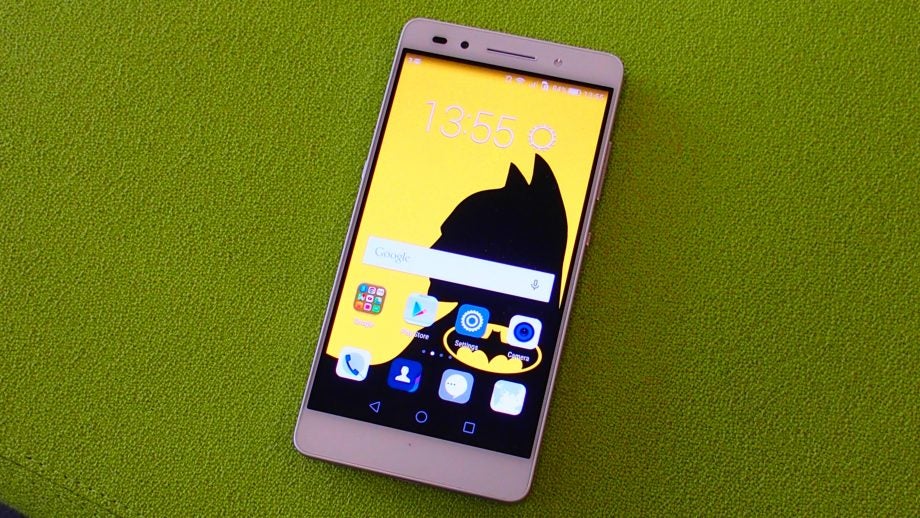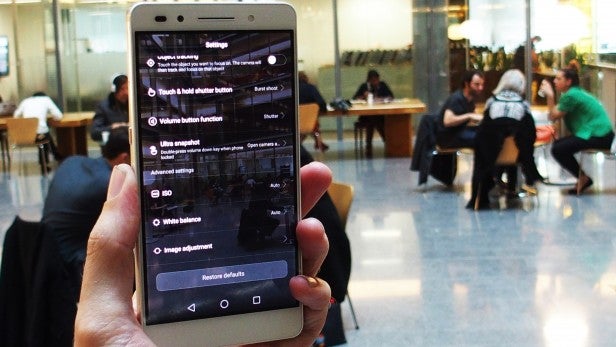Honor 7 Review - Camera Review
Camera
Huawei’s spin-off keeps its parent company’s strengths and weaknesses

Sections
- Page 1 Honor 7 Review
- Page 2 Software and performance Review
- Page 3 Camera Review
- Page 4 Battery, sound and conclusion Review
Honor 7 – Camera
Rear: 20-megapixel, 5,152 x 3,888 resolution, with dual-LED flash and Sapphire Lens. Front: 8-megapixel, 3,264 x 2448 resolution
Camera technology is an increasingly competitive area in the smartphone industry. Motorola set the standard for affordable smartphones earlier this year when it released its stellar third-generation Moto G.
Featuring similar specifications to the Nexus 6, which costs close to three times as much, the Moto G (2015) is one of the best affordable camera-phones on the market.
The OnePlus 2 also boasts pretty impressive camera specs for its price, loaded with a 13-megapixel rear camera and a 5-megapixel front option.
Aware of it’s stiff competition, the Honor 7 comes with an impressive 20-megapixel rear camera and a 8-megapixel front-facing unit. In a bid to further improve the Honor 7’s photo-taking ability, Honor has also included a custom camera app, which adds a variety of new shot modes, controls and filters.
I was impressed with the Honor 7’s performance when shooting with the camera set to auto. Honor claims the rear camera boasts focus speeds of 0.1 seconds, and having thoroughly tested the Honor 7, I can say this is true.
The camera features Sonic the Hedgehog-level shutter and autofocus speeds. Images caught in the automatic mode universally looked crisp, displayed decent contrast and colour balance levels and were more than good enough for sharing on social media.

From a techinical perspective, there’s one negative to the Honor 7’s camera: the lack of optical image stabilsation (OIS). This is one key bit of tech that its rival, the OnePlus 2, has seen fit to include. OIS improves a camera’s low-light
performance by compensating for and reducing the impact of
minor hand movements, or vibrations.
Running the two head to head, I found shots taken on the Honor 7 in regular light featured slightly more realistic colours. The OnePlus 2’s camera performed better in low light, however.

Taken on the Honor 7
Taken on the OnePlus 2
The Honor 7 also offers an impressive number of preset modes. While some, such as the Beauty mode mentioned earlier and “good food” – yes, you read that right: the Honor 7 has a camera mode specifically for photographing your dinner – are fairly useless, others are pretty cool.
One of the best is the camera’s light-painting mode. Light painting is a custom feature designed to create artistic shots in specific low-light conditions. These include “car light trails”, “light graffiti”, “silky water” and “star track” settings.
The settings instruct the camera to continue shooting until the user manually stops and create artistic photos that track and display moving light. The resulting effects look similar to an extended exposure photo shot taken with a DSLR.
While the feature sounds gimmicky, I found it entertaining to use and was fairly pleased with the shots I could create using it.
My only issue with the Honor 7 camera is the software’s terrible UI, which hides a number of useful features.
For example, while the camera offers manual controls for key features, such as ISO, white balance, exposure, saturation, contrast and brightness, they’re hidden away in sub-menus.
Accessing them requires you to click through multiple menu screens, which is time-consuming and clunky. These features would be better included as a pull-out menu in the main camera UI – as seen in the LG G4’s camera app.
How we test phones
We test every mobile phone we review thoroughly. We use industry standard tests to compare features properly and we use the phone as our main device over the review period. We’ll always tell you what we find and we never, ever, accept money to review a product.


